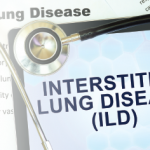
Image Credit: Gajus/shutterstock.com
Distinguishing between IPF and NSIP is the single biggest challenge in the interstitial lung disease world.
SAN FRANCISCO—“Interstitial lung disease is the last bastion of great medicine,” according to Paul Noble, MD, chair, Department of Medicine, director, Women’s Guild Lung Institute, Vera and Paul Guerin Distinguished Chair in Pulmonary Medicine, Cedars-Sinai Medical Center, Los Angeles. Making it great medicine, he said, are the many things still unknown about this disease.
In a presentation titled, The Changing Landscape in Fibrosing Lung Diseases, held at the 2015 ACR/ARHP Annual Meeting, Dr. Noble traversed the challenging terrain of accurate diagnosis of interstitial lung disease (ILD) given the multiple connective tissue disorders that may underlie ILD, such as scleroderma and rheumatoid arthritis (RA), as well as the many patients who fall into the gray area of undifferentiated connective tissue disease in which the disease has not yet fully revealed itself.

Dr. Noble
Dr. Noble focused his talk on the large gray area of undifferentiated connective tissue disease in which most patients with ILD fall and, in particular, on those patients with idiopathic interstitial pneumonia with autoimmune features.
Once connective tissue disease is excluded as an underlying cause of ILD, he said that an accurate diagnosis boils down to one of two conditions—idiopathic pulmonary fibrosis (IPF)/usual interstitial pneumonia (UIP) and nonspecific interstitial pneumonia (NSIP). Most patients (approximately 70%) will have IPF, and 15–25% will have NSIP.
“Distinguishing between IPF and NSIP is the single biggest challenge in the interstitial lung disease world,” he said.
Driving the need to distinguish between IPF and NSIP is the drastic difference in prognosis between the two conditions, as well as advances in treatment that now permit more targeted treatment of disease. Rather than treating all patients with fibrosing lung disease with immunosuppression therapy, as was done in the past, he said that newer treatments now permit better treatment for patients based on the underlying cause of ILD. Most patients with IPF will succumb within five years without a lung transplant, according to Dr. Noble, who also said that new drugs slow disease progression but still don’t make the patient better.
Patients with NSIP rarely need a transplant, he said, and these patients have a better prognosis with immunosuppression therapy.
Dr. Noble’s presentation focused on IPF and NSIP, the how and why of distinguishing between them, as well as promising therapies emerging to treat IPF.
Distinguishing Between IPF & NSIP
Recognizing the different patterns of fibrosis between IPF and NSIP is critical to diagnosis and, even in the best of pathologists’ hands, is not easy, he said. He emphasized that definite IPF, in which honeycombing is evident on high-resolution computed tomography (HRCT), should not be biopsied, because that would do more harm than good.
Showing several images of lung scans, Dr. Noble walked participants through various images that can help differentiate IPF from NSIP. “It’s all about pattern recognition,” he emphasized, saying that a distinguishing characteristic of IPF is the subpleural honeycombing pattern seen on imaging in which large areas of the lung remain uninvolved.
It is now thought that the pathological process of IPF is different from a disease such as RA. Rather than a systemic disease, IPF is more of a local disease, limited to the lungs.
“We think that IPF is more like a cancer,” he said, with a disease process linked to aging and stem cell failure. He said IPF is nearly unheard of in people younger than 50 years of age and rises dramatically in those 70 years and older. Smoking is also a risk factor.
“We think the disease begins with mutations in alveolar type II stem cells, where inside the cell there are misfolded proteins that are not being handled properly,” he said. Research underway to understand what leads to this process is suggesting that the cells are not regenerating properly, and stem cell failure results in a pathology that is “kind of like a tumor growth underneath the epithelium.”
Saying that 2014 was a watershed year for IPF, he described research aimed at finding ways to stimulate the regenerative process in type II stem cells and halt the growth of fibrosis in lungs that has resulted so far in two new drugs that target this process.
Promising New Treatments
Dr. Noble ended his talk with a review of the clinical trials that led to the approval by the Food and Drug Administration (FDA) of two new drugs to treat IPF.
The first drug, pirfenidone, was approved in 2014, based on results of the CAPACITY trials in 2011 and the more recent ASCEND trial in 2014. The CAPACITY trials were two concurrent randomized trials that assessed the benefit of pirfenidone vs. placebo on lung function in patients with IPF.1 Mixed results were reported in the trials, with one trial showing a positive benefit on lung function with pirfenidone compared with placebo and the second trial showing no difference between the two treatments.1 More recent data from the ASCEND trial showed a significant reduction in disease progression with pirfenidone compared with placebo as reflected by significant improvement in lung function, exercise tolerance and progression-free survival.2
Although no one really knows how it works, it seems to affect a number of inflammatory and fibrotic pathways in the biology of healing, said Dr. Noble. As such, it is thought of as the wound-healing molecule.
In October 2015, the FDA approved nintedanib. Developed as a cancer drug, nintedanib targets multiple tyrosine kinases. Based on phase 2 data that suggested its benefit in reducing declining lung function and acute exacerbations in patients with IP, two phase 3 randomized trials (INPULSIS-1 and INPULSIS-2) were conducted to assess the efficacy and safety of nintedanib (150 mg, twice daily) in patients with IFP.3
Results of the studies showed a significant reduction in declining lung function in patients treated with nintedanib compared with placebo, with one study (INPULSIS-2) also showing a significant benefit in time to first acute exacerbation with nintedanib, whereas the other study (INPULSIS-1) found no significant difference between the two groups.
Results of the trials show that both drugs are safe, according to Dr. Noble, but also carry tolerability issues that are important and significant.

Dr. Distler
“Hope is on the horizon for the treatment of fibrotic disease,” said Oliver Distler, MD, Division of Rheumatology, University Hospital Zurich, Zurich, Switzerland, who moderated the session. The potential of these therapies to treat rheumatologic diseases is also under investigation with trials currently underway testing them in systemic sclerosis (SSc) ILD. “Nintedanib is [being tested] in a large placebo-controlled randomized clinical trial that just launched, and pirfenidone in a proof-of-concept open-label study,” he said, saying that the latter study was presented at the ACR meeting but was difficult to interpret for efficacy as it was not a controlled trial.
Dr. Noble ended his talk with a look to the future, citing three “exciting” phase II trials examining the association of IPF pathogenesis to potential therapies. The drugs being tested in these trials are Beta6 Integrin, LOXL2 and LPA receptor, all of which represent select, targeted, therapeutic approaches to IPF treatment. He said that future trials will address whether fibrosis can be reversed by targeted therapy before progression to end-stage disease.
Second Chance
If you missed this session, it’s not too late. Catch it on SessionSelect
Mary Beth Nierengarten is a writer, editor and journalist with more than 20 years of experience writing about clinical medicine and health-related issues, and lives in Minneapolis.
References
- Noble PW, Albera C, Bradford WZ, et al. Pirfenidone in patients with idiopathic pulmonary fibrosis (CAPACITY): Two randomized trials. Lancet. 2011;377:1760–1669.
- King TE Jr, Bradford WZ, Castro-Bernardini S, et al. A phase 3 trial of pirfenidone in patients with idiopathic pulmonary fibrosis. N Engl J Med. 2014;29:370:2083–2092.
- Richeldi L, du Bois RM, Raghu G, et al. Efficacy and safety of nintedanib in idiopathic pulmonary fibrosis. N Engl J Med. 2014;370:2071–2082.

